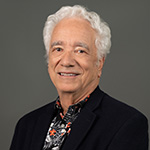Center for Energy Efficiency and Renewable Technologies
Center for Energy Efficiency and Renewable Technologies
Providing global warming solutions for California and the West.

Join CEERT Email Newsletter
wind power development
Summary:
As with Big Solar, California for decades led the world in wind power technology innovation. With world-class wind energy resources and a strong commitment from both the public and private sectors, we are poised for a quantum leap in wind power generation. More than 6,000 megawatts of wind energy planned for Southern California’s Tehachapi region alone, and this is just the start. Barriers to development include lack of transmission from remote resource regions, insufficient market mechanisms for power procurement, land use and siting hurdles, and inadequately mitigated impacts on wildlife. CEERT’s Wind Power Program facilitates cooperation and consensus among stakeholders and public-interest advocates in removing barriers to expanded wind-power development.
Recent Developments:
Tehachapi Transmission Project Approval
The California Public Utilities Commission recently gave active consideration to a Proposed Decision granting Southern California Edison’s application for a certificate of public convenience and necessity to build Segments 4 – 11 of the Tehachapi Renewable Transmission Project, which will access 4,500 MW of windpower capacity. Though CEERT was not a party to this proceeding, the Commissioner sought the advice and input of CEERT Research Director Rich Ferguson, in light of his work with RETI. Rich participated in an en banc hearing before the Commissioners to express CEERT’s view that the project should move forward without delay and in a manner consistent with the “environmentally superior alternative” route adopted by the Proposed Decision. The CPUC’s final decision (D.09-12-044) (http://docs.cpuc.ca.gov/word_pdf/FINAL_DECISION/111744.pdf ) approved the project and adopted this alternative route.
Wind Power Integration
CEERT has launched a Low-Carbon Grid Program that is mapping least-cost ways to integrate into the grid large amounts of wind and other renewable energy — amounts sufficient to meet both the state’s 33% RPS and AB 32 climate goals. The Program is demonstrating that balancing and consolidating the state’s electrical system is a much better integration alternative than firming variable sources like wind (and solar) with backup fossil-fired power.
As part of this work, CEERT is helping forge agreements between municipal utilities and investor-owned utilities to operate their now-segregated transmission lines cooperatively in order to achieve the benefits of an integrated statewide system, is develop mechanisms for sharing operational control of transmission lines between municipal utilities and the CAISO, and is helping municipal utilities throughout the state obtain reliable long-term access to Tehachapi wind power and other Southern California renewable resources at reasonable prices.
Wildlife Impact-Mitigation Guidelines
CEERT recently reached a milestone in our efforts to mitigate wind power’s effects on wildlife when the Energy Commission (CEC) adopted the “California Guidelines for Reducing Impacts to Birds and Bats from Wind Energy Development.” The California Department of Fish and Game (CDFG) subsequently released a statement endorsing the Guidelines and directing its staff on their future use.
These Guidelines represent an important step forward for the wind industry and environmental groups on what has historically been a very difficult issue. While the Guidelines are not a final resolution of all the related problems and not everyone is completely satisfied with the document, the goodwill that has been built among CEERT’s wind-company affiliates, the environmental community, and state and local agencies does pave the way for a smoother, less confrontational project development process. CEERT has continued to work with the CEC and CDFG on implementation and use of the Guidelines, and on training of the agencies’ staff in counties with significant wind-power potential.
The release of the document capped two years of challenging work, with CEERT drafting key recommendations and helping to forge compromises on essential issues. We would like to commend all involved for great leadership and a lot of hard effort. In particular, Julia Levin (Audubon Society), Carl Zichella (Sierra Club), Andy Linehan (PPM Energy), Brenda LeMay (Horizon Wind Energy), and Kenny Stein (FPL Energy) provided technical expertise and support from start to finish, and without them we would not have been able to achieve this important outcome.
Following the document’s adoption, CEERT’s Paul Vercruyssen was invited to speak at an American Wind Energy Association symposium to discuss the process and lessons learned here in California. Paul was able to meet with prominent environmental and industry representatives as well as government officials who will be leading a similar process at the national level. Our experiences here in California will certainly help to guide the federal process and local efforts in other parts of the country.
Paul worked closely with CEERT affiliate PPM Energy in the final permitting and approval of the Dillon Wind Project in the San Gorgonio Pass. Paul testified at Riverside County Planning Commission and Board of Supervisors hearings, and his lone environmental voice in support of the project was instrumental in its passage.
Wind Power Projects
Rhonda Mills and several other CEERT staff members were involved in the permitting and approval of the Los Angeles Department of Water and Power’s 120-megawatt Pine Tree Wind Project in eastern Kern County. The facility was developed by CEERT affiliate Horizon Wind Energy, and represents a $425 million investment. Pine Tree will more than double the portion of LA’s power that comes from wind.
PdV Wind Energy Project, which is being developed by CEERT affiliate enXco, Inc., will generate up to 300 megawatts in southwest Kern County. CEERT has played a lead role in outreach to Kern County environmental groups, organizing visits to the project site, providing access to researchers conducting the environmental studies, and coordinating a joint letter of support signed by Union of Concerned Scientists, Natural Resources Defense Council, and national Sierra Club, among others. These efforts led to unprecedented environmental support for the project.

Program Coordinator:
Jim Caldwell

